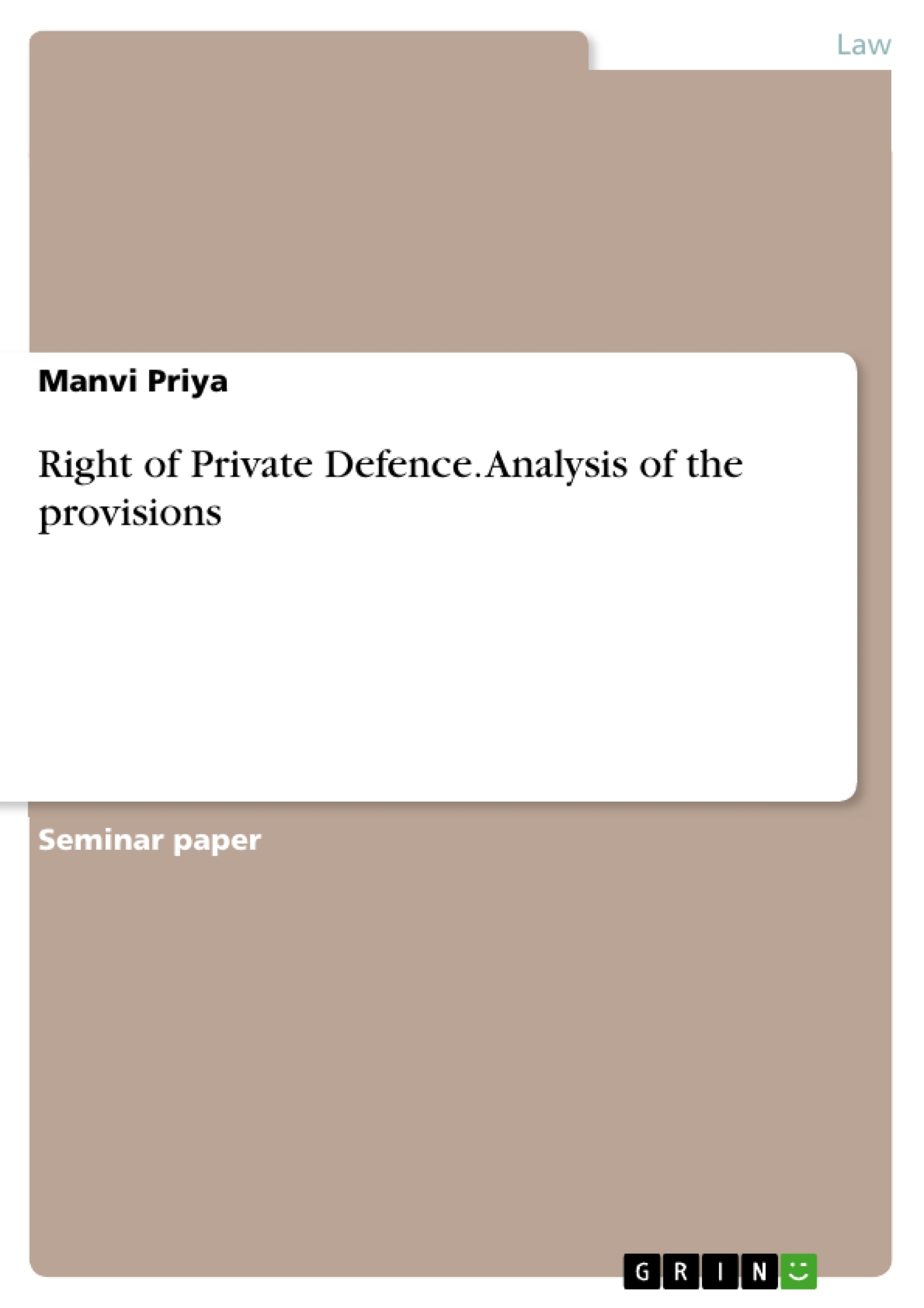Private Defence is one of the most important aspect under criminal law. In criminal jurisprudence, the matter is not decided or ascertained merely on the ground of event took place but the facts and circumstances under which it happened. State machinery cannot reach expeditiously on the crime scene as may be required, so private defence if exercised within the realm of law carries built in justification. In this work, a detailed analysis of the concerned provisions is made with a special on the cases to understand the application of law.
Table of Contents
- Introduction
- Concept of Private Defence in India
- Nature of private defence
- Analysis of the provisions in private defence
- Section 96- Right of Private Defence
- Section 97 - Private Defence against one's or other body and one's or other property
- Section 98 - Private Defence against person of Unsound mind
- Section 99 - When right to private defence is not available and an exception in that unavailability
- Section 100 Exercise of private defence against body to the extent of causing death
- Section 101 - Exercise of private defence against body to cause any harm other than death
- Section 102- Commencement and continuance of right to private defence against body
- Section 103- Exercise of private defence against property to the extent of causing death
- Section 104 - Exercise of private defence against property to cause any harm other than death
- Section 105 - Commencement and continuance of right to private defence against property
- Section 106- In course of exercising private defence causing harm to innocent person
- Discussion of Sections with cases
- Section 96 - Nothing is an offence which is done in exercise of right to private defence
- Section 97 - Right to private defence of the body and property
- Section 98 - When an act which would otherwise be an offence is not an offence by reason of youth, unsoundness of mind, intoxication of person doing that or misconception of fact on the part of the person committing the act, every person has the same right of private defence against that act as they would have if the act were considered an offence.
- Section 99 - Act against which there is no right of private defence
- Section 100 - This section provides extreme limits of the right to private defence. In course of exercising private defence against body subject to the last preceding section and situations herein mentioned below a person can cause death of the person against whom he is so exercising his right.
Objectives and Key Themes
This article aims to provide a comprehensive analysis of the right of private defence as enshrined in the Indian Penal Code, 1860. It examines the concept of private defence in India, its nature, and the legal framework governing its exercise. The article also delves into specific provisions of the code and analyzes landmark cases that have shaped the understanding and application of the right of private defence.
- The legal framework of private defence in India
- The scope and limitations of the right of private defence
- The proportionality principle in the exercise of private defence
- The role of the courts in interpreting and applying the right of private defence
- The impact of private defence on criminal law and its role in protecting individuals from unlawful harm
Chapter Summaries
The introduction sets the stage by discussing the fundamental principle of self-preservation as a basis for the right of private defence, highlighting its universal acceptance and legal recognition. It emphasizes that while this right is not absolute, it is subject to specific legal limitations.
The chapter on the concept of private defence in India delves into the detailed explanations provided in the Indian Penal Code, highlighting the importance of considering facts and circumstances surrounding an act in determining its legality. This chapter also explores the rationale behind the right of private defence, explaining it as a means for citizens to protect themselves against imminent harm when state intervention is not readily available.
The chapter on the nature of private defence emphasizes its preventive nature, clarifying that it is not intended for punishment or retaliation. This chapter further emphasizes the importance of proportionate force and the necessity to avoid resorting to violence when alternative options are available.
The chapter on the analysis of provisions in private defence examines the specific sections of the Indian Penal Code that outline the situations in which the right of private defence can be exercised. The section by section analysis provides clarity on the scope and limitations of the right, encompassing various situations, including defence against bodily harm, property theft, and attacks by persons of unsound mind.
The final chapter focuses on the discussion of specific sections with cases. It delves into key cases that have shaped the interpretation and application of the right of private defence under each provision of the Indian Penal Code. These case studies provide valuable insights into the practical application of the legal principles surrounding private defence and highlight the nuances involved in determining the legality of actions taken in self-defense.
Keywords
Private defence, Indian Penal Code, criminal jurisprudence, self-preservation, unlawful aggression, proportionality, imminent harm, public servant, case law, legal analysis.
- Arbeit zitieren
- Manvi Priya (Autor:in), 2024, Right of Private Defence. Analysis of the provisions, München, GRIN Verlag, https://www.hausarbeiten.de/document/1473002


